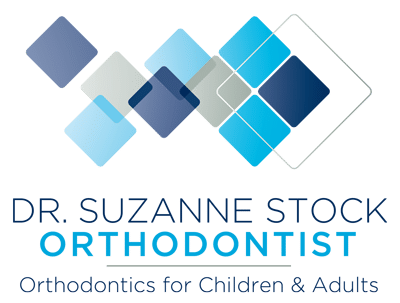Will you soon be getting braces? Braces are an orthodontic treatment used to straighten teeth and align the bite. They are most commonly worn by children in their adolescent years, but many adults also get braces.
On the day you get your braces put on you will be given a kit that includes a variety of items to use during your treatment, such as special tools for cleaning your teeth and brackets. Among these items will be something called orthodontic wax. What is wax for braces? Read on to learn what it is and how to use it to your advantage, especially during your first days in braces.
What Are Braces?
Braces are metal or clear brackets that attach to the front of each tooth. A bracket is a small, square-shaped piece that an archwire can be attached to. The archwire is a metal wire that connects all of the brackets for the purpose of shifting the teeth. Springs and rubber bands may also be used to help shift the teeth into proper alignment.
Getting Used To Braces
When braces are first put on your teeth it can take a little while for your mouth to get used to the foreign objects. You may salivate more than usual for the first few days. The way that the brackets protrude slightly from the smooth surface of your teeth can cause the soft tissues of your mouth to become irritated. In most cases this irritation subsides as your mouth gets used to the braces.
How To Soothe Irritation From Braces
While your mouth is getting used to the braces, the inside of your cheeks and lips can become irritated. The easiest way to combat irritation is to use orthodontic wax that is provided by your orthodontist. Wax can be placed over the brackets and archwire to smooth it over, giving your mouth a chance to heal.
How To Use Orthodontic Wax
Before using wax, be sure to wash your hands and brush your teeth so that there’s no food stuck in your brackets. To apply orthodontic wax, take a small, pea-sized amount and soften it between your fingers. Form it into a ball and apply it to the bracket that is causing the irritation. This will allow your mouth to heal without constantly rubbing against the brackets.
The wax can be removed to eat, but it is ok if it is accidentally swallowed. Wax should be removed before brushing and flossing or it may come off the brackets on its own through the process.
Preventing Irritation
After getting your braces put on and at the end of each appointment, it is important to check for any rough spots or wires poking out. Move your lips and cheeks around and run your tongue over your braces to see if there are any places where you feel anything out of the ordinary. This can prevent the need for orthodontic wax.
Other Options For Soothing Irritation From Braces
There are a few other options for soothing the irritation that occurs from your braces:
- Pain relievers. You can take over the counter pain medication to ease irritation. We recommend anti-inflammatory medications such as ibuprofen.
- Oral anesthetics. Oral medications, such as orajel, are designed to temporarily numb the soft tissues of your mouth.
- Salt water rinse. You can get some relief with a warm salt water rinse. Mix a teaspoon of salt into 8 ounces of warm water and swish it around in your mouth. Spit it out and repeat the rinsing process a few times. Do this 3-4 times a day until you experience relief.
Getting Started With Orthodontic Treatment
If you’ve never had an orthodontic evaluation, it's not too late. Children should have an evaluation by the time they are 7 years old, though treatment does not typically start until the ages of 9-14. Dr. Suzanne Stock provides orthodontic evaluations and treatment for children and adults.
Contact us today to learn more and schedule an appointment at one of our 4 convenient locations.

